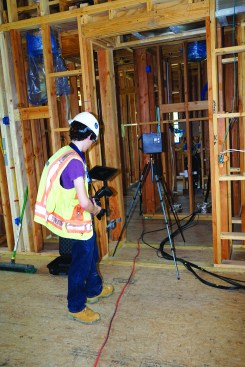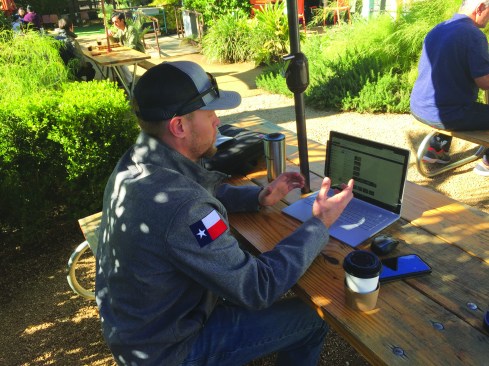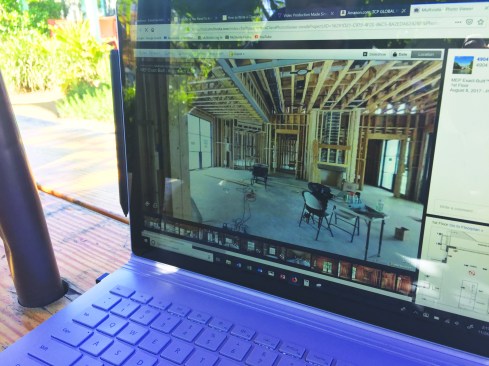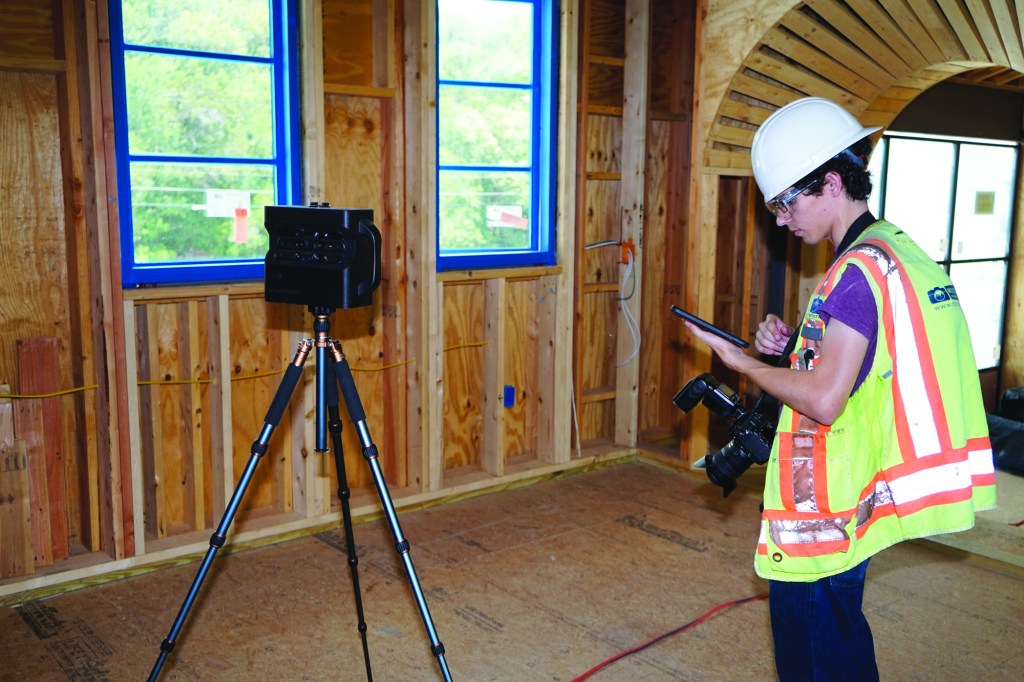
At the same time, the tech is taking high-resolution still photos of some locations, which can be keyed to the virtual model of the building.
There comes a time in every construction project when everything that’s built into the walls and ceilings—wires, pipes, ductwork, all of it—disappears forever. You stuff the cavities with insulation, you hang drywall over the studs, and all the framing, wires, and pipes are buried. After that, if there’s a problem inside those walls, you kind of have to guess about what’s where—guided only by drawings that may or may not reflect what was actually built.
At least, that’s how it used to be. But not anymore. Nowadays, it’s possible to make detailed, accurate three-dimensional photo records of a house the day before everything is covered up. Technology is revolutionizing the face of construction documentation.
The photos at left show a technician for Multivista, a construction documentation firm, creating a three-dimensional photo record of a house under construction by Risinger Homes in Austin, Texas. JLC had gone to the job for another reason, but when we saw the Multivista crew at work, we were curious. So we sat down with John Whitton (j.whitton@multivista.com), a Multivista contractor in the Austin market, for some explanations.
“The way the business was built was from an electrician in Victoria, British Columbia, who always—just for his own purposes—took photos before the walls were covered as proof of his work installations and stuff, and he would save them in folders on his computers,” said Whitton. “And then homeowners who noticed him taking the photos, years later would reach out to him and say, ‘I remember you taking photos inside the walls, can I see those photos? I am trying to solve some issues.’ Well, after that happened a couple of times, he thought, ‘Man, I really think I could build a business on this idea, taking photos, and if I could link them to the floor plans that would be great, so you could tell exactly where you’re at within a home, or within a construction project.’”
That inspiration grew into Multivista, a franchise operation with dozens of franchisees around the United States and in Europe. With two co-managers and seven photographers on staff, Whitton’s franchise now handles the market in Austin and San Antonio. “We offer a product and a service,” said Whitton. “Our product is our online platform, where you can access the photos, you can add your own photos, you can share the photos, you can email them, and you can send links to people with any number of photos attached to that link, so they can only see those photos.”

Multivista contractor John Whitton logs on to a project model over Wi-Fi at a coffee shop in Austin, Texas.
The fly-through 3-D photo model of each project shows the real condition of the walls and ceilings the moment before everything is closed up.
The service is a construction documentation process. “We coordinate with the construction team to be out there on site at the exact moment after everything has been inspected inside your walls, but just before you stuff insulation or you drywall,” said Whitton. “We wait until everyone is done working in the wall, come out and take our photos, then they insulate and drywall, and we do it without affecting their schedule. We can shoot photos pretty quickly. So we create the best visual as-built that is possible. We cover every square inch of the building. And then we link those photos to the floor plans of the project, and then we store them, or we host them online in an easy-to-use mobile application and desktop application.”
From the original solution of a collection of still images keyed to a floor plan, the technology has evolved. Now, Multivista technicians bring a sophisticated 3-D image capture device to the job. “Matterport (matterport.com) is the technology,” said Whitton, “and we have a strategic partnership with them. It’s the same technology used in real estate to create virtual-reality walk-throughs; the only difference is that, in our case, we’re walking you through the building under construction, instead of when it’s finished.”

The interface gives password-protected access to project documentation wherever there’s an Internet connection.
“There are a few different ways that we document,” said Whitton. “We capture exact moments in time—for instance, just before you pour concrete, we will come out and take photos of what’s inside that concrete so you can look back into those systems. You can basically have X-ray vision of what’s inside the concrete. But then we also offer progress photos, where we come out once every two weeks, or once a month, and we take the same photo from the same location, so that when you click on an arrow in the model, up pops a photo, and when you choose ‘progress,’ up pops a string of photos, so you can see the building from the same perspective over the course of the project duration.”
